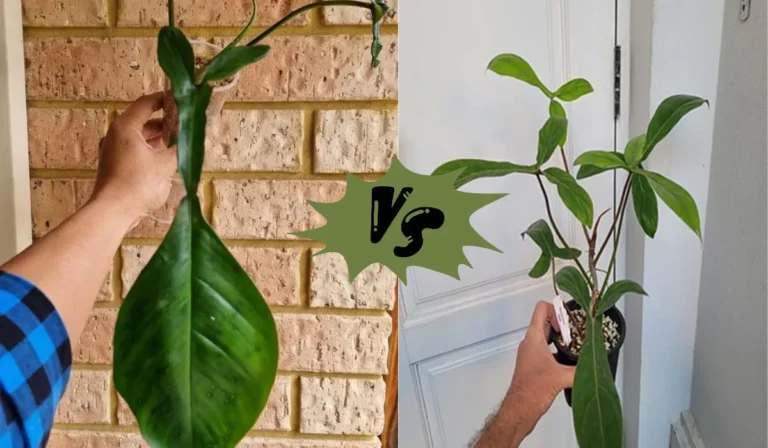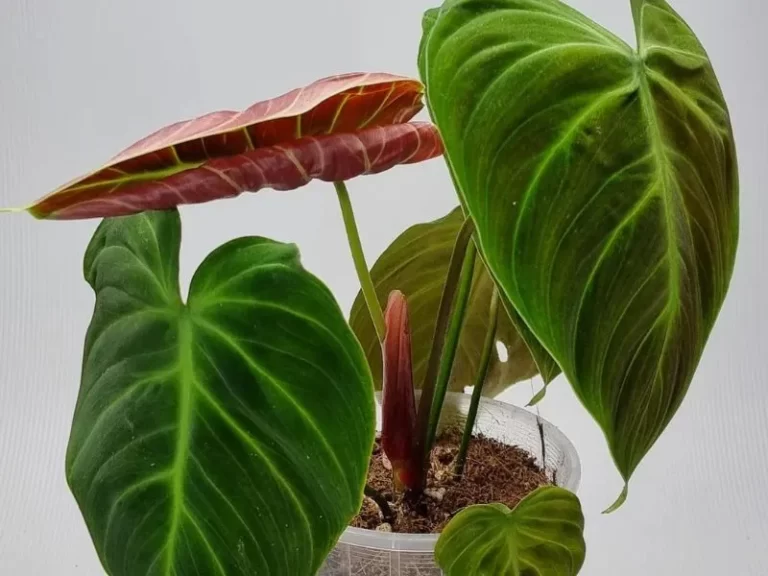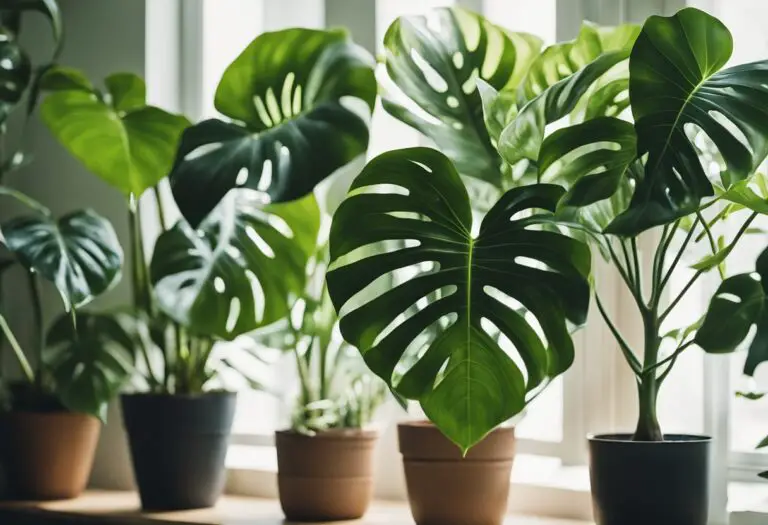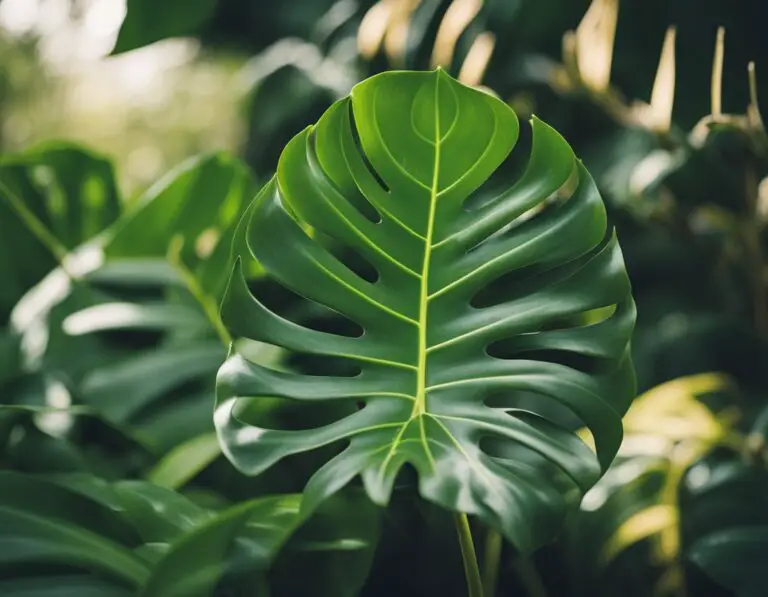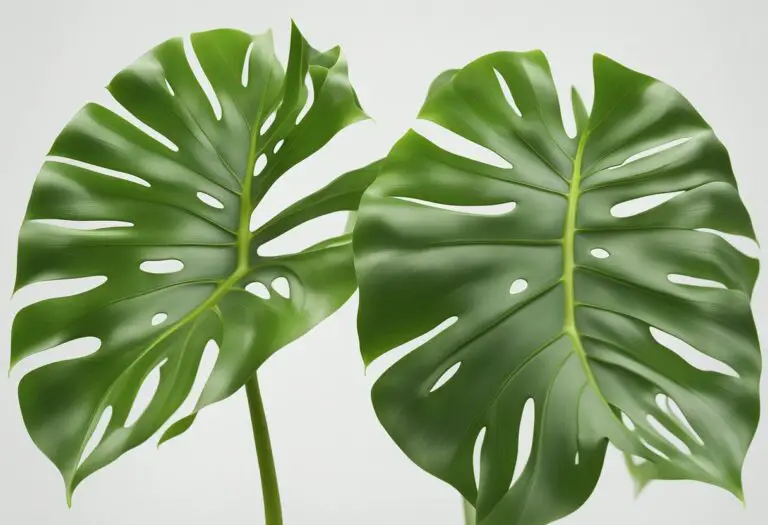Philodendron Genevievianum: A Guide to Growing and Caring for this Rare Houseplant
From Louise: I’m a gardening enthusiast, specializing in plant care and flower knowledge. I’m here to share my expertise and help with your gardening questions. Feel free to ask about Philodendron Plant care – I’ll respond within 24 hours!
If you’re a fan of exotic plants, you might want to consider adding the Philodendron genevievianum to your collection. This climbing vine is native to the rainforests of Ecuador and is known for its large, dark green, pleated leaves with a silver sheen and white veins.
With the right care, your Philodendron genevievianum can grow fast and thrive long, making it a beautiful addition to any home or office.

Don’t be intimidated by its exotic origins – the Philodendron genevievianum is actually quite easy to care for. It’s a low-maintenance plant that thrives in bright, indirect light and prefers well-draining soil.
Keep the soil moist but not waterlogged, and fertilize it regularly during the growing season to encourage healthy growth.
Key Takeaways
- Philodendron genevievianum is a climbing vine native to the rainforests of Ecuador, known for its large, dark green, pleated leaves with a silver sheen and white veins.
- It’s a low-maintenance plant that thrives in bright, indirect light and prefers well-draining soil.
- Keep the soil moist but not waterlogged, and fertilize it regularly during the growing season to encourage healthy growth.
Philodendron Genevievianum

Origin and Habitat
Philodendron Genevievianum is a captivating climbing vine that originates from the lush rainforests of Ecuador. In its natural habitat, this plant can reach impressive heights of up to 50 feet.
However, when cultivated indoors, it tends to be more compact, making it a suitable choice for home environments.
Plant Description
This stunning plant is characterized by its large, dark green, pleated leaves that possess a unique silver sheen and prominent white veins. The leaves have a soft, silky texture, adding to their allure.
The plant’s slender, slightly fuzzy stems contribute to its distinctive appearance. While it does not typically bloom when grown indoors, Philodendron Genevievianum can be propagated through stem cuttings, making it an accessible and rewarding addition to your collection.
Growth and Cultivation

Soil
To grow a healthy Philodendron genevievianum, you need to use well-aerated soil that is rich in organic matter.
You can create your own aroid soil mix by combining standard houseplant soil with coconut husk, charcoal, coir, or perlite. Additionally, you can add organic matter such as orchid bark or worm castings to the mix.
Light
Philodendron genevievianum prefers bright, indirect light. Direct sunlight can scorch the leaves, so it’s best to place your plant near a window that receives bright, filtered light.
If you’re growing your plant indoors, you may need to supplement its light with artificial light sources such as grow lights.
Watering
Like most houseplants, Philodendron genevievianum prefers to be kept evenly moist. Water your plant when the top inch of soil feels dry to the touch. Overwatering can lead to root rot, so it’s important to avoid this.
If you’re unsure whether your plant needs water, insert your finger into the soil to check its moisture level.
Fertilizer
Philodendron genevievianum benefits from regular fertilization during the growing season.
Use a balanced, water-soluble fertilizer once a month to promote healthy growth and foliage. Be sure to follow the manufacturer’s instructions for application rates and timing.
Propagation
Philodendron genevievianum can be propagated through stem cuttings. Take a cutting that includes at least one node and several leaves, and place it in a container filled with moist, well-draining soil.
Keep the soil moist and provide bright, indirect light until the cutting has established roots and new growth.
Pests and Diseases
Philodendron genevievianum is generally resistant to pests and diseases, but it can be susceptible to mealybugs, spider mites, and scale insects.
If you notice any signs of infestation, treat your plant with an insecticidal soap or neem oil spray.
Common Issues and Solutions

If you’re growing Philodendron genevievianum, you may run into some common issues. Here are some of the most common issues and how to solve them:
Yellowing Leaves
Yellowing leaves on your Philodendron genevievianum could be a sign of overwatering or underwatering.
Check the soil moisture level and adjust your watering schedule accordingly. Also, make sure your plant is not getting too much direct sunlight, as this can cause leaf burn.
Pests
Philodendron genevievianum can attract pests such as spider mites, mealybugs, and scale insects.
If you notice any pests on your plant, isolate it from other plants and treat it with an insecticidal soap or neem oil. Be sure to follow the instructions carefully and repeat the treatment as necessary.
Pot-Bound Roots
Philodendron genevievianum is a fast-growing plant and can become pot-bound quickly.
When this happens, the roots become cramped and the plant may stop growing. To solve this, simply replant your Philodendron genevievianum in a larger pot with fresh soil.
Brown Tips
Brown tips on the leaves of your Philodendron genevievianum could be a sign of low humidity or over-fertilization.
To increase humidity, mist your plant regularly or use a humidifier. If you have been fertilizing your plant too often, reduce the frequency and amount of fertilizer.
Wilting Leaves
If your Philodendron genevievianum’s leaves are wilting, it could be a sign of underwatering or root rot. Check the soil moisture level and adjust your watering schedule accordingly.
If the soil is consistently wet, it may be a sign of root rot, which can be caused by overwatering or poor drainage. To solve this, repot your plant in fresh soil with better drainage.
By following these tips, you can keep your Philodendron genevievianum healthy and thriving.
Propagation Methods
If you want to expand your collection of Philodendron genevievianum, propagation is a great way to do so. Here are the three most common propagation methods:
Stem Cuttings in Water
If you want to propagate Philodendron genevievianum using stem cuttings in water, follow these simple steps:
- Cut a stem from the mother plant that is at least 4-6 inches long and has a few leaves.
- Remove the leaves from the bottom 2 inches of the stem.
- Place the stem in a glass or jar filled with water, making sure that the bottom 2 inches are submerged.
- Change the water every few days to prevent bacteria growth.
- After a few weeks, roots will start to grow from the bottom of the stem.
- Once the roots are at least an inch long, you can transfer the cutting to soil.
Stem Cuttings in Soil
If you want to propagate Philodendron genevievianum using stem cuttings in soil, follow these simple steps:
- Cut a stem from the mother plant that is at least 4-6 inches long and has a few leaves.
- Remove the leaves from the bottom 2 inches of the stem.
- Dip the cut end of the stem in rooting hormone powder (optional).
- Plant the stem in a pot filled with well-draining soil.
- Water the soil thoroughly and keep it moist but not waterlogged.
- Place the pot in a bright spot, but not in direct sunlight.
- After a few weeks, roots will start to grow from the bottom of the stem.
- Once the roots are established, you can transplant the new plant to a larger pot.
Node Propagation
If you want to propagate Philodendron genevievianum using node propagation, follow these simple steps:
- Identify a node on the stem of the mother plant.
- Cut the stem just below the node.
- Plant the stem in a pot filled with well-draining soil.
- Water the soil thoroughly and keep it moist but not waterlogged.
- Place the pot in a bright spot, but not in direct sunlight.
- After a few weeks, roots will start to grow from the node.
- Once the roots are established, you can transplant the new plant to a larger pot.
Propagation is a fun and easy way to share your love of Philodendron genevievianum with others. With these three methods, you can easily propagate new plants and share them with your friends and family.
Is Philodendron Genevievianum Toxic?
If you’re planning to add Philodendron Genevievianum to your collection, it’s important to know that this plant is toxic to humans and pets.
The plant contains calcium oxalate crystals in its leaves and stems, which are responsible for its toxicity. Ingesting even small amounts of this plant can cause serious health problems such as drooling, vomiting, difficulty swallowing, and swelling of the mouth, tongue, and throat.
To avoid any health problems, it’s best to keep Philodendron Genevievianum out of reach of small children and pets.
If you decide to grow this plant, take precautions to protect yourself and others from its toxic effects. Always wear gloves when handling the plant, and be sure to wash your hands thoroughly after touching it.
How to Identify Philodendron Genevievianum?
If you are interested in growing Philodendron Genevievianum, it is important to know how to identify it.
Here are some characteristics that will help you identify this rare plant:
- Leaves: The leaves of Philodendron Genevievianum are large, dark green, and pleated with a silver sheen and white veins. They are also fuzzy to the touch, which is a unique characteristic of this plant.
- Stem: The stem of Philodendron Genevievianum is thick and sturdy, allowing it to climb trees and other surfaces in its natural habitat.
- Flowers: Philodendron Genevievianum only blooms when it reaches maturity, which can take up to 15-16 years. The flowers are small and white, and they only bloom in the plant’s natural habitat.
- Size: Philodendron Genevievianum is a medium-sized plant that can grow up to 3-5 feet in height when grown indoors.
If you are still unsure whether or not you have a Philodendron Genevievianum, you can always consult with a plant expert or take a sample of the plant to a local nursery for identification.
In summary, Philodendron Genevievianum is a unique and rare plant that can be identified by its large, dark green, and pleated leaves with a silver sheen and white veins, its thick and sturdy stem, and its small white flowers that only bloom in its natural habitat. If you are a plant enthusiast, this beautiful plant is definitely worth adding to your collection.
How to Care for Philodendron Genevievianum?
Philodendron Genevievianum is a low-maintenance plant that can thrive in a variety of conditions. Here are some tips to help you care for your Philodendron Genevievianum:
Watering
To keep your Philodendron Genevievianum happy, you need to provide it with adequate water.
However, overwatering should be avoided. It’s best to keep the soil moist, but not waterlogged, which could cause root rot. Water your plant once or twice weekly throughout the growing season, and reduce watering in the winter.
Light
Philodendron Genevievianum prefers bright, indirect light. Direct sunlight can scorch the leaves, so it’s best to keep it away from windows that receive direct sunlight. If your plant isn’t receiving enough light, it may become leggy and produce smaller leaves.
Temperature and Humidity
Philodendron Genevievianum prefers warm temperatures between 65-80°F (18-27°C). It also thrives in high humidity, so it’s a good idea to mist the leaves regularly or place a humidifier nearby.
Soil
Philodendron Genevievianum prefers well-draining soil that is rich in organic matter. A mixture of potting soil and perlite or sand can provide the ideal growing conditions for your plant.
Fertilizer
Philodendron Genevievianum benefits from regular fertilization during the growing season.
A balanced fertilizer can provide the necessary nutrients for healthy growth. Be sure to follow the instructions on the fertilizer package and avoid over-fertilizing.
Propagation
Philodendron Genevievianum can be propagated through stem cuttings. Simply cut a stem below a node and place it in water or soil. Keep the cutting moist and warm, and roots should begin to form in a few weeks.
Toxicity
Philodendron Genevievianum contains toxic compounds that can cause irritation to the skin and gastrointestinal upset if ingested. Keep it out of reach of children and pets.
Frequently Asked Questions (FAQs)
What are some similar philodendron species to Genevievianum?
If you’re interested in Philodendron Genevievianum, you might also want to check out other species in the Philodendron genus.
Some similar philodendron species to Genevievianum include Philodendron Gloriosum, Philodendron White Knight, and Philodendron Birkin.
How do I care for Philodendron Genevievianum?
Philodendron Genevievianum is a low maintenance plant that is easy to care for. It prefers bright, indirect sunlight and well-draining soil. Keep the soil moist but not waterlogged, and avoid letting the soil dry out completely.
Fertilize the plant every 2-3 months during the growing season with a balanced fertilizer. Prune the plant regularly to encourage bushier growth.
What is the growth rate of Philodendron Genevievianum?
Philodendron Genevievianum is a slow-growing plant. It can take several years for the plant to reach its full height of up to 50 feet in its natural habitat. However, with proper care, the plant can grow up to 6 feet in height indoors.
What is the ideal temperature for Philodendron Genevievianum?
Philodendron Genevievianum prefers warm temperatures between 65-85°F (18-29°C). It can tolerate slightly cooler temperatures but should be kept away from drafts and cold air.
Can Philodendron Genevievianum be grown indoors?
Yes, Philodendron Genevievianum can be grown indoors. It is a popular choice for indoor gardening due to its low maintenance requirements and attractive foliage. However, it is important to provide the plant with bright, indirect sunlight and well-draining soil.
How often should I water Philodendron Genevievianum?
Philodendron Genevievianum prefers moist soil, but it is important not to overwater the plant.
Water the plant once or twice a week during the growing season, and reduce watering frequency during the winter months. Check the soil moisture level regularly and adjust watering as needed.

